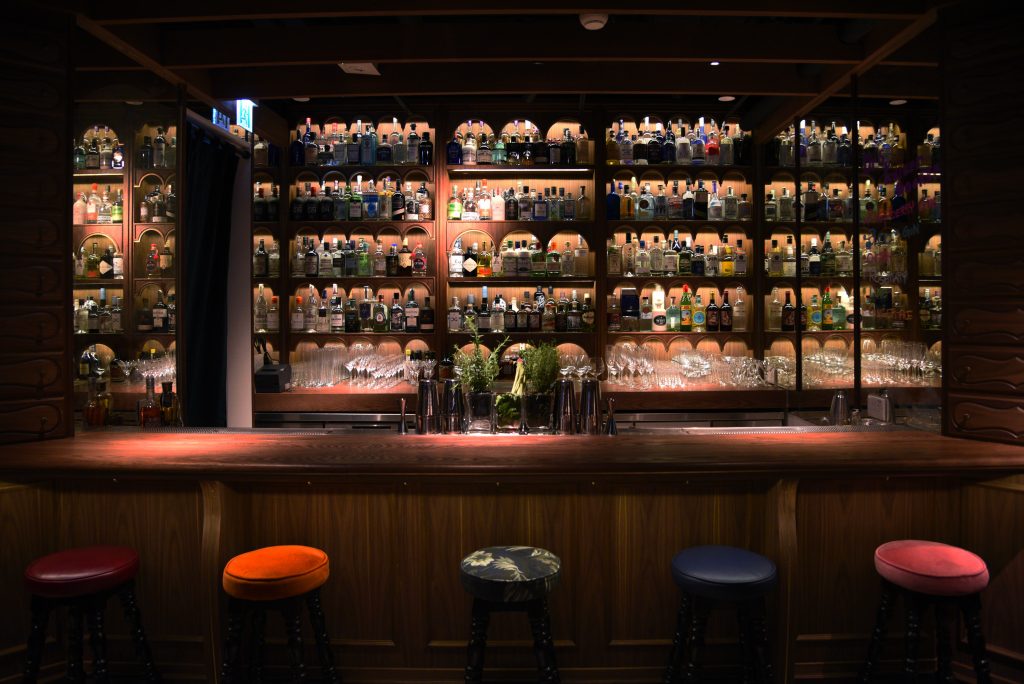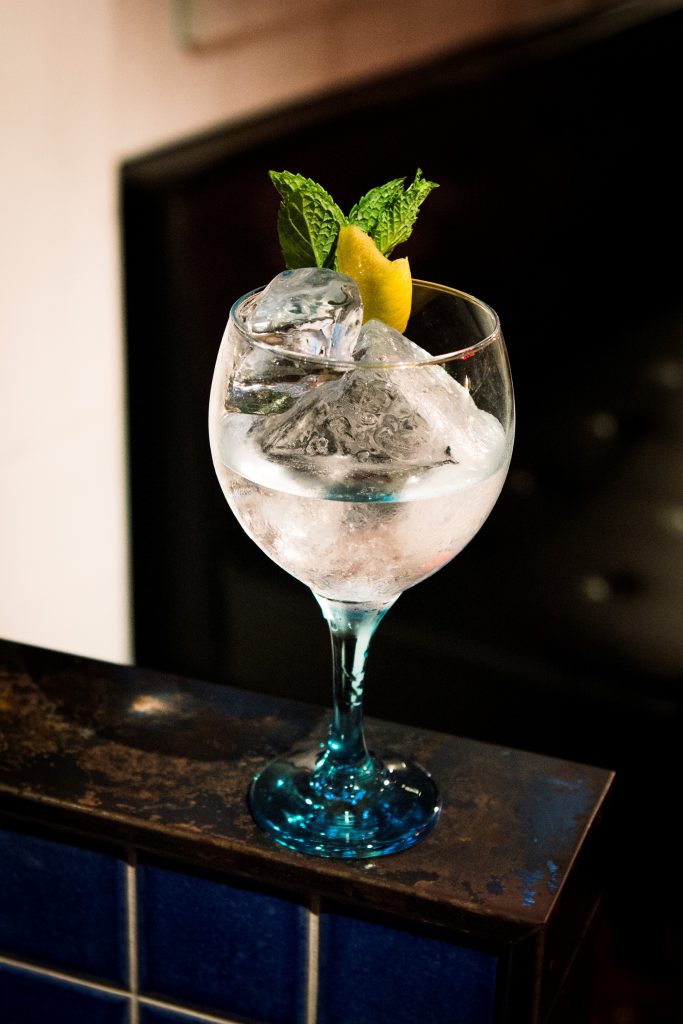As sailors have said for 150 years, once the “sun is over the yardarm”, we are all entitled – some might say obliged – to pour a gin and tonic. But exactly how you fix your gin can make all the difference. There’s a science to this art.
To know your gin, you have to know your history
Antonio Lai, co-owner of Ori-Gin on Wyndham Terrace, eloquently explains how history’s biggest empire (with all of its voluminous faults) depended upon one supreme yet simple cocktail. “Gin and tonic was the most effective tool to build the British Empire – from its anti-malarial aspect to its spine stiffening crispness and its ability to help endure hardships while being far from home. The fragrant harbour of Hong Kong was most certainly balanced with the scent of juniper.”
Hong Kong and the juniper-infused water of life go together like… well, gin and tonic.
Gin was brought to Hong Kong by the British East India Company and the Royal Navy. (The British armed forces had learned of ‘genever’, an early form of gin, from the Dutch, whom the British had fought alongside during the seventeenth century.) Jeremy Moreau, of Proof and Company – organizers of Hong Kong’s inaugural Gin Jubilee last August – knows his history.
“The first British ships which arrived in Hong Kong in 1842,” says Jeremy, “were likely stocked with gin, [South American] cinchona powder – from which quinine, the active ingredient in tonic, is derived – and lemons. It is interesting to note that gin and tonic was brought around the world by the East India Company as a form of mandatory medicine for its officers: the ascorbic acid (vitamin C) in the lemon [or limes – hence the nickname of ‘limey’ for Brits] helped ward off scurvy, tonic helped with malaria fever and gin was considered a cure-all.”
No wonder Winston Churchill once proclaimed, “The gin and tonic has saved more Englishmen’s lives, and minds, than all the doctors in the Empire.”
Indeed, I know one family for whom the thought of their precious gin bottles helped them through war. They buried their gin in their back garden on The Peak as the Japanese invaded in 1941. The father of the family unearthed the bottles upon his release from Sham Shui Po prisoner-of-war camp in 1945.
Tonic matters
Quinine, ground from the bark of cinchona trees, has a bitter taste. So, in taking their daily rations, British officers took to mixing cinchona powder with sugar and soda water. Some bright spark – we don’t know who – discovered that this new anti-malarial ‘tonic water’ tasted much better with a tot of gin. (If I had a time machine, that is the moment in history I would first visit!)
In 1870, Schweppes began to produce an ‘Indian quinine tonic’. But the word ‘tonic’ is at least 300 years old. An early definition described ‘tonic’ as “having the property of restoring to health.” A trip to the doctor soon exposes my ignorance regarding this branch of medicine.

Dr. Fern’s Gin Parlour, dispenser of the city’s largest range of gins, is the only establishment in Hong Kong to offer Blind Tiger Piper Cubeba Gin. Just as the Foxglove group, who run Dr. Fern’s, embrace the spirit of Prohibition America with concealed entrances to their establishments, the exact location of the Blind Tiger distillery is so mysterious even Google appears perplexed. Somewhere in western Belgium, Blind Tiger gins are handcrafted in small batches. And the name? Speakeasy watering holes in the US circumvented Prohibition laws by selling tickets to see a back room attraction – one favourite being a blind tiger. The entrance fee would include a ‘free’ gin cocktail. No money was paid for the drink, so technically no laws were broken. (And, of course, the blind tiger never found its way into the room.)
I like to taste the gin more than the mixer, so I order a Blind Tiger with Q Tonic, which is known to be lighter in taste (and sugar). Q Tonic is also dry, so less refreshing. Served in Dr. Fern’s slim Collins glasses, the generous sprig of rosemary aromatically and literally pokes me in the nose with such boldness that the gin’s eponymous cubeb pepper botanical is somewhat wasted on me.

However, Bar Manager Gerry Olino (pictured above) then presents me with a Blind Tiger served to the Doctor’s prescription – paired with Fever Tree Indian Tonic (and a slightly shorter herbal sprig), which subdues the rosemary and enlivens the gin flavors. Tonic matters.
Dr. Fern’s competitors agree. “Different brands of tonic taste different”, says Antonio Lai. “Take the brands that we have at Ori-Gin as examples — Schweppes is sweeter, Fever Tree is more balanced, East Imperial is lighter, and Fentimans comes with a stronger taste of quinine.”

Some aficionados have their personal preferred tonic. For Jeremy, it’s East Imperial Old World Tonic. Made with all Asian ingredients, this tonic “has low sugar,” he says, “no citric acid added, and is cold-processed, which means that you can actually taste the gin.”
Others are stricter. “Pairing the right tonic water with the right gin is a MUST … All tonics are different and it absolutely changes the taste of the gin”, says Danny Wong, Director of The Bottle Shop.
The Perfect Serve
A native of the island of Menorca, Spain, Juan Martínez Gregorio, co-owner and founding partner of Ping Pong 129 Ginoteria in Sai Ying Pun, pours passion into every glass. “We have focused in developing connections with distilleries, suppliers and clients … understanding the spirits, the local taste and mixing possibilities through thoughtful pairings, looking for the ‘perfect serve’.”
Rather than promoting trendy brands or fashionable cocktails, at Ping Pong the focus is unapologetically on mixing the classic G&T: “A long and refreshing drink, made for hot and humid weather”, says Juan, affirming the drink’s Hong Kong credentials.

Juan has classic tastes and almost shudders with embarrassment when admitting that Ping Pong’s bestseller is a trendy raspberry-infused gin. More to his liking is Xoriguer, a gin made in and named after his hometown, where the juniper berries are dried for two years before use. It was Juan who first brought Xoriguer Gin to Asia – literally, in his suitcase. It’s a 300-year-old gin, with a rustic, piney character and oily palate, now found in bars from Bangkok to Boston.
Ping Pong serve Xoriguer with lemon zest and mint leaves. Such garnish is more than mere window dressing. The pairing of a gin with an inappropriate garnish upsets years – sometimes generations – of knowledge and work by the master gin distiller. But the right choice will draw out preferred flavors from the botanicals within the gin.
Ice: size and shape
For the perfect serve, even the shape of the ice matters. “Dilution due to small pieces of ice happens quickly and ruins a good G&T”, says Danny Wong of The Bottle Shop. There are ways to avoid this calamitous First World problem.
One hand-carved chunk to fit the glass – rather than a slush of ice cubes – minimizes the watering down of the gin. At Dr. Fern’s, they chill not only the glasses and the tonic waters but also their most popular gins, to avoid a clash of temperatures which would turn your G&T watery. Jeremy explains that the trick is to serve the gin first, then any garnish and then tonic. Lastly, “… Add ice, oh so carefully. This way the flavors will be integrated fully and you will preserve the carbonation of the tonic”, which helps distribute the flavors.

The jury’s out on glass shape: Ping Pong sides with the Spanish balloon glass, where warm hands are kept to the stem and a single block of ice will keep the drink cooler longer and with minimal dilution. Dr. Fern’s sticks by the tall, slim Collins glass, which funnels the aromas towards your nose.
The spirit of invention
At the forefront of Hong Kong’s ginaissance, Ori-Gin opened in 2013 as the first gin-focused bar, and they take gin innovation further than their rivals.
Hungie Fong (pictured) talks me through the method in the madness. “Using the neutral-tasting Tanqueray London Dry as our base, we redistill gin with different flavors. Or we slow cook gin with additional botanicals such as chrysanthemum or Earl Grey and cucumber.”

“Also, we do barrel-ageing,” says Hungie. “Here’s Tanqueray soaked in cinnamon and orange in oak Bourbon barrels for five days.” Purists may scowl, but it tastes divine – rounded, smooth and balanced, so neither the cinnamon nor the orange lets you forget you’re drinking gin. One trick I’ve performed as an amateur at home is simply to leave a slice of fresh ginger or orange peel or a cinnamon stick in the remains of an inexpensive bottle of gin overnight (and not a second more!) to enhance flavors already present within the gin.
However you prepare your gin, think symbiosis. Download Ginventory, a free phone app that matches thousands of gins to appropriate garnishes and tonics, and you’ll find you’ve just upgraded your life. For fixing a fine gin, symbiosis is everything.
At Ori-Gin, Hungie tailors a gin flight for me from among his redistilled selection. The mere smell of his Basil and Kaffir Lime gin transports me to Thailand – that moment when you arrive at a plush hotel and take in the fragrance (not to mention later when you eat Thai food). But more surprising is the taste sensation ignited by Ori-Gin’s Japanese shiso gin. A leaf in the mint family, shiso displays other characteristics when infused via a re-distillation of Tanqueray. Before dousing it tonic, take a sip neat: divergent, sherbet-boosted marzipan flavors dart around your mouth with little sense of purpose yet tremendous joy.
And surely enjoyment is as important as the “medicinal benefits” gin and tonic have brought since the colonial era? When it comes to fixing a decent gin, art is every bit as important as science.





Reader Interactions